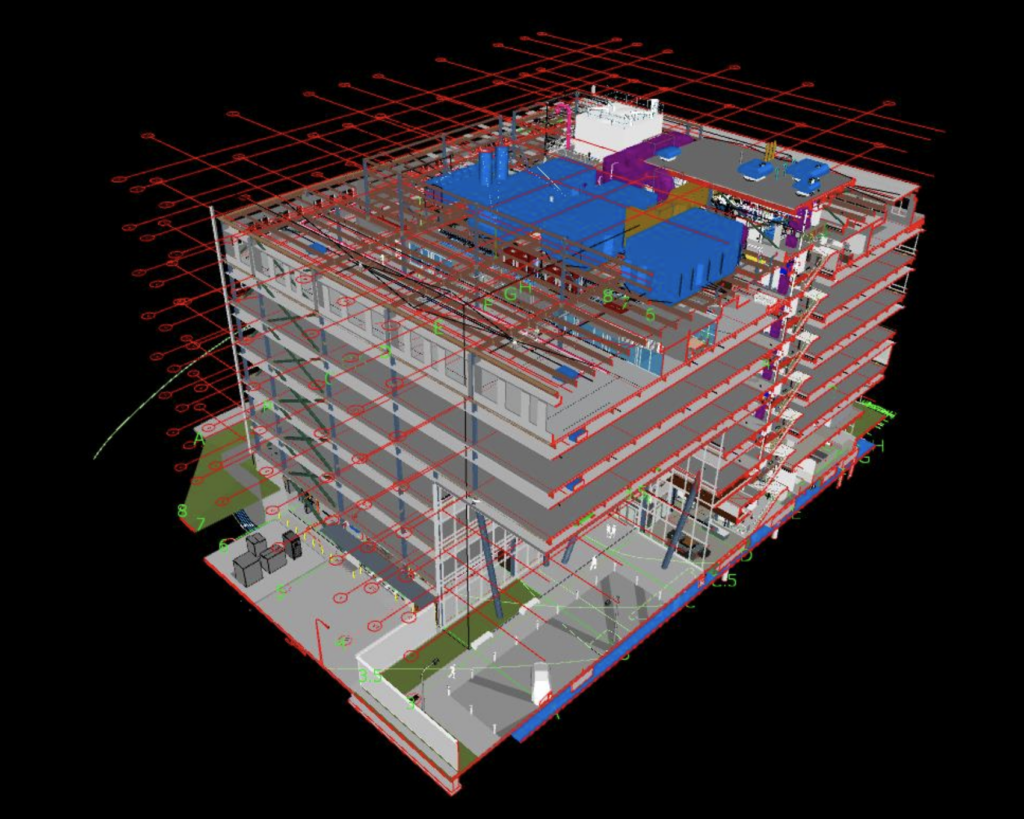Our engineering team loves a good acronym, because we love efficiency! We’re not talking about acronyms today though. We’re talking about Building Information Modeling, or as we like to call it – BIM.
First off, what is BIM?
If you prefer to rely on Wikipedia, they define BIM as:
“a process supported by various tools, technologies and contracts involving the generation and management of digital representations of physical and functional characteristics of places.”
Not exactly the most clear definition, but we’re here to help break it down for you. Let’s call this post “BIM 101” or “Intro to BIM”, if you will.
The best way to define Building Information Modeling is to consider an example of BIM in action. Imagine with us that you’re building a fifteen story building in downtown Grand Rapids. Each floor has its own Mechanical, Electrical, Plumbing needs. To oversimplify it, we use BIM to virtually build every part of the building. Before the groundbreaking ceremony is scheduled, we have a virtual design of that building, to scale, with every single “i” dotted and “t” crossed.

But why?
There are a lot of benefits to utilizing BIM in a project. By virtually designing the entire project, we can plan every detail exactly as it should be. That means when it comes time to run plumbing and electrical, every line, every pipe, every fixture has a place. BIM allows us to eliminate margin of error, before the errors could even occur. What does that mean?
- Increased efficiency.
- Improved material acquisition.
- Decreased material waste.
- Predictable field coordination.
- Ability to pre-fab materials.
- Streamlined material storage.
Remember that fifteen story building we were imagining together? Well, turns out, there’s not a lot of storage space to keep all of the material as we build. That means we need to be able to predict what is needed, when it’s needed in order to avoid any delays in the process. Because we utilized BIM for this imaginary project, we can predict exactly what materials are needed, well in advance, so that they arrive ready to go – right on time.
Let’s summarize our BIM 101 course:
Building Information Modeling allows us to digitally design every aspect of a project. This means we have a virtual model of a project, allowing us to plan every detail. BIM allows us to reduce waste, increase efficiency, and predict potential errors well before they could occur.
When you’re ready to build your next project, connect with our engineering team to see how BIM can make your project more efficient all around.



